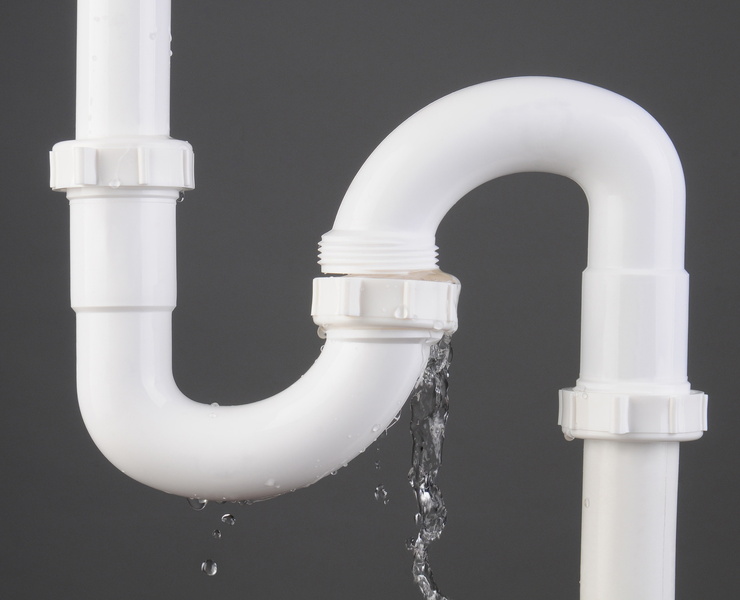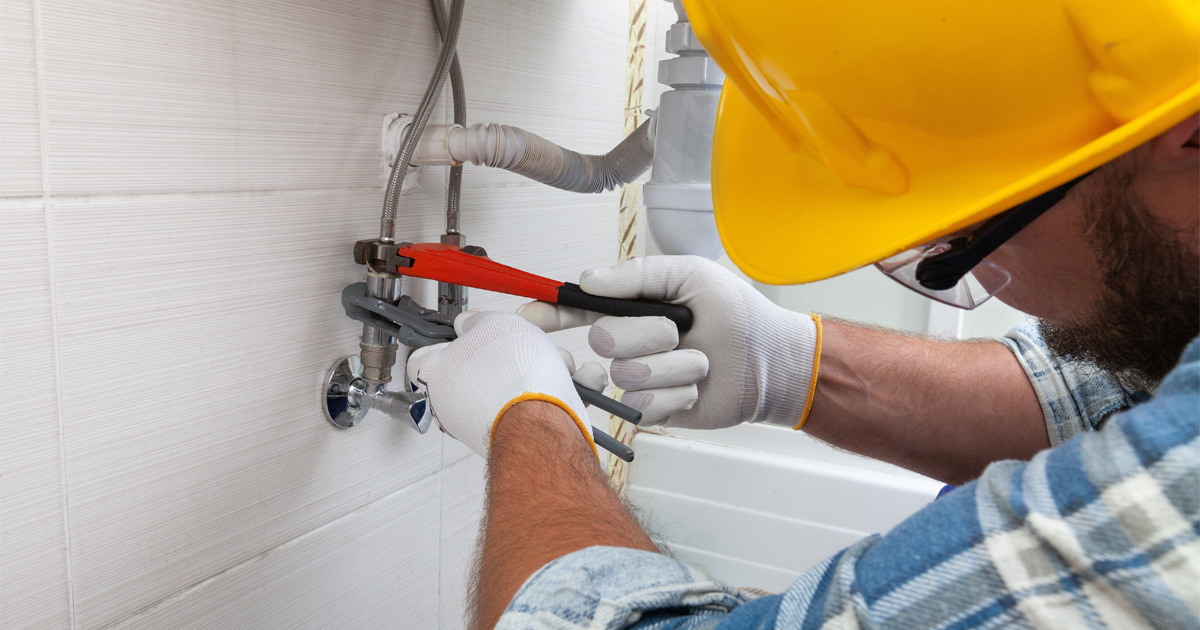Deciphering the Fundamentals of Home Plumbing: A Beginner's Manual
Deciphering the Fundamentals of Home Plumbing: A Beginner's Manual
Blog Article
Everyone seems to have their unique piece of advice on the subject of What to Know About Plumbing: Basics, Tips, and Insights.

Plumbing is a necessary facet of any home, in charge of supplying clean water for alcohol consumption, cooking, and showering, in addition to getting rid of wastewater safely. Recognizing the basics of home plumbing is necessary for each house owner to make sure proper maintenance, troubleshooting, and, if required, fixings. In this newbie's overview, we'll cover the basic ideas of home plumbing to assist you come to be much more knowledgeable about exactly how it functions.
Water System System
The water supply system brings tidy water right into your home from a municipal water source or a private well. It contains a major water line that attaches to your home's plumbing system, generally located underground. A water meter gauges the quantity of water taken in, while a shut-off valve allows you to control the circulation of water right into your home.
Plumbing Components
Plumbing components are devices that supply water to different parts of your home and consist of sinks, taps, toilets, showers, tubs, and appliances such as dishwashers and cleaning makers. Each component is connected to the supply of water system through pipelines and installations and may have its shut-off shutoff for upkeep or emergencies.
Water Heating System
The water heater is accountable for heating water for residential usage, including bathing, food preparation, and cleansing. Usual types of water heaters include tank-type water heaters, tankless (on-demand) water heaters, and heat pump hot water heater. The hot water heater is linked to the water system system and delivers hot water to plumbing components as required.
Drainage System
The water drainage system eliminates wastewater from your home and brings it away to a sewer treatment facility or septic system. It consists of a network of pipelines, installations, and fixtures that transport wastewater from plumbing fixtures to the primary sewer line or sewage-disposal tank. Proper drainage is vital to avoid clogs, back-ups, and sewage leakages.
Air flow System
The air flow system assists preserve proper atmospheric pressure and avoid sewer gases from entering your home. Air vent pipes, likewise called vent stacks, expand from plumbing fixtures to the roof covering, permitting drain gases to leave securely outdoors. Air flow pipelines also enable air to enter the water drainage system, assisting in smooth wastewater circulation and stopping suction or vacuum effects.
Usual Plumbing Tools
Having the right devices available is important for doing basic plumbing fixings and upkeep tasks. Typical plumbing devices consist of adjustable wrenches, pipe wrenches, pliers, pipe cutters, hacksaws, bettors, augers (or drain serpents), and Teflon tape. Having these tools easily available can help you tackle small plumbing problems successfully.
Fundamental Plumbing Fixings
While some plumbing repairs may need specialist aid, many typical concerns can be attended to with basic DIY techniques. Knowing just how to deal with a dripping tap, unblock a drainpipe, replace a toilet flapper, or fix a dripping showerhead can conserve you time and money on plumbing repair work.
Verdict
Comprehending the fundamentals of home plumbing is important for every home owner to keep a risk-free, useful, and effective plumbing system. By acquainting yourself with the water system, plumbing fixtures, water drainage system, air flow system, usual plumbing devices, and basic repair work, you can confidently attend to small plumbing concerns and ensure your home's plumbing system runs efficiently.
Plumbing for Beginners: A Comprehensive Guide
If you’re a beginner when it comes to plumbing, don’t worry; you’re not alone. Plumbing may seem intimidating, but with the right knowledge and a little practice, you can handle many common plumbing issues on your own. In this comprehensive guide, we will demystify the world of plumbing for beginners, providing you with the basic knowledge and skills needed to tackle common plumbing problems and even take on some DIY plumbing projects.
The Importance of Basic Plumbing Knowledge for Beginners:
First and foremost, basic plumbing knowledge gives you a solid foundation. It helps you grasp the key concepts and terminology that are essential in this field. By learning the basics, you’ll be able to build upon that knowledge and tackle more complex plumbing tasks in the future.
Having a basic understanding of plumbing also enables you to handle common issues that may arise in your home. Picture this: a leaky faucet or a clogged drain. With some basic plumbing knowledge, you’ll have the confidence to troubleshoot and fix these problems on your own. It saves you from unnecessary expenses and the hassle of waiting for a professional to arrive.
As a beginner, learning the basics of plumbing empowers you to take care of your own home. It gives you a sense of independence and self-reliance. You’ll no longer have to rely solely on professionals for every small issue that pops up. Instead, you can handle many tasks yourself, saving time and money in the process.
Remember, everyone starts as a beginner. Embrace the learning process and take small steps to expand your plumbing knowledge. There are plenty of online resources, tutorials, and even local workshops that talk about plumbing for beginners.
Essential Tools for Plumbing for Beginners
As you start your plumbing journey, having the right tools in your toolbox is crucial. Let’s explore some of the must-have tools:
Adjustable Wrench:
This versatile tool is a staple in any plumber’s toolbox. It allows you to tighten or loosen nuts and bolts of various sizes. Make sure to have an adjustable wrench with a comfortable grip.
Pipe Wrench:
A pipe wrench is specifically designed for gripping and turning pipes. It has serrated jaws that provide a strong grip, making it easier to loosen or tighten threaded pipes and fittings.
Plunger:
The plunger is a simple yet effective tool for clearing clogged drains and toilets. It creates suction when you push and pull, helping to dislodge blockages. Keep a good-quality plunger handy for those unexpected clogs.
Pipe Cutter:
When it comes to cutting pipes, a pipe cutter is your go-to tool. It creates clean, precise cuts without damaging the pipe. Look for a pipe cutter that can handle the pipe sizes you’re working with.
Hacksaw:
A hacksaw is useful for cutting through pipes, screws, and other materials. It’s a versatile tool that can handle different cutting tasks. Remember to use a blade suitable for cutting metal.
Tape Measure:
Accurate measurements are crucial in plumbing. A tape measure allows you to measure pipe lengths, distances, and dimensions accurately. Opt for a sturdy tape measure that extends a good length.
Pliers:
Pliers come in handy for various tasks, such as gripping, bending, and cutting. Slip-joint pliers with adjustable jaws are great for gripping pipes, nuts, and bolts.

I recently found that article on What to Know About Plumbing: Basics, Tips, and Insights when doing a search on the internet. Do you know about anybody else who is looking into the topic? Take a moment to promote it. Thanks so much for your time invested reading it.
Schedule Your Job Now Report this page